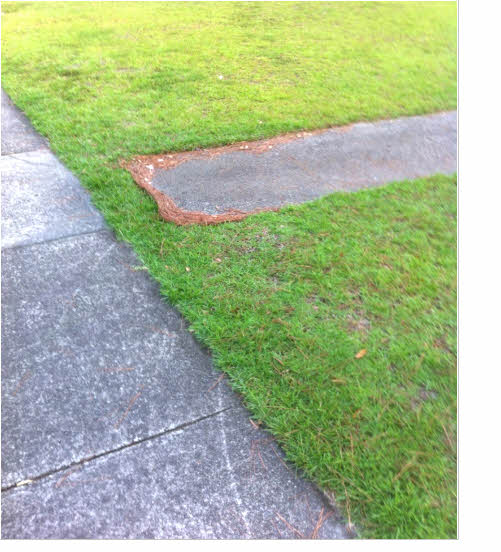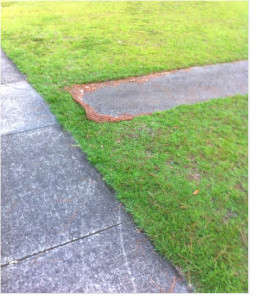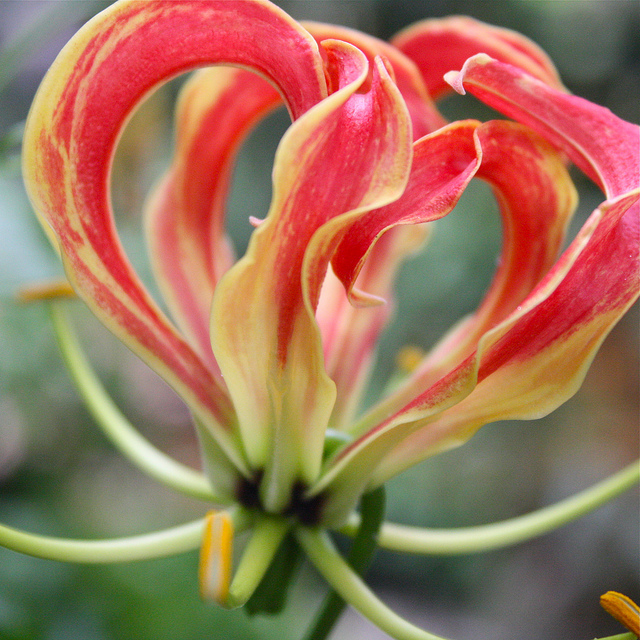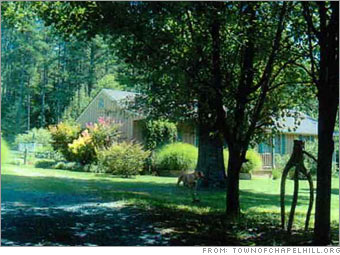Gimme Green
I recently checked a short film called Gimme Green out of the Richland Library. It’s a film from 2006 by a couple of University of Florida students. It was recommended by a fellow Master Gardener, Crystal Masterson, in an article she wrote for an upcoming issue of the Midlands Master Gardener newsletter on eliminating or reducing the size of your lawn. Gimme Green isn’t for everyone (but if your sense of humor draws you to Waiting for Guffman or David Byrne’s True Stories, you might enjoy it), but some of the facts it presents are truly astounding:
- Everyday more than 5000 acres of land are converted to lawn.
- Over $40 billion is spent on lawns in US per year.
- US lawns require 60,000,000,000 gallons of water per day.
- More than 30,000 tons of pesticides applied to yards in the US annually.
- Of the 30 most used lawn pesticides, 17 are routinely detected in groundwater.
- Half of these 30 pesticides are possible or probable carcinogens according to the EPA.
- Children in households using lawn pesticides have a 6.5 times greater risk of developing leukemia.
Carolina Nature
It’s rare to come across a resource that’s good and specific for helping us identify the plants and animals we’re likely to come across locally. In addition to NameThatPlant.net, the Savannah River Ecology Lab Herpitology website , and Plantman at the USC Herbarium , I would add a website I came across only recently, Carolina Nature.
Red Bay Death at Belser Arboretum
I wrote last month on the threat of the red bay ambrosia beetle to our red bay and sassafras trees. At the time, I hadn’t heard of any reports of this insect in the Midlands. Recently on a visit to the USC Belser Arboretum , I examined a number of dying red bays. While I didn’t see any of the beetles’ tell-tale frass extrusions, the pith in the dying trees was consistent with the laurel wilt disease carried by the red bay ambrosia beetles. Unfortunately, once the trees are infected by laurel wilt, there’s nothing that will save them.
Tree ID
On the recommendation of a certified arborist, I tried a tree identification app for iPhone called Tree ID . It’s free for iPhone, but I don’t know if there is an android equivalent. Tree ID has wonderful photos and good descriptions of many trees—a more comprehensive database than many tree books. But it’s not got everything. Missing was Quercus variabilis, the Chinese cork oak—a tree I see every time I walk to Earthfare, and one I’ve been trying to ID for some time (I managed to figure it out looking through lots of images of acorns online). I’m not sure how useful Tree ID is going to be for most folks. I’ve yet to successfully manage to ID a tree by entering characteristics into the key, so I don’t think it’s going to be a reliable ID tool unless you have some idea of what it is you’re looking at, but it’s worth a try for the photos alone.
Help Me Solve a Puzzle
Dear readers, I’d like your help. I’ve noticed a phenomenon that I cannot explain. The first time it came to my attention was on James Island, near Charleston. Since then, I’ve noticed it dozens of times in Columbia. What I’m talking about is incomplete front walks, walks that go from a home’s front door toward the street or sidewalk, and then stop just shy of their destination. I’ve included a couple of photos. Did the builders have some reason not to connect to the street or sidewalk? If you know the answer to this mystery or wish to hazard a guess, please use the “Comment” section below. I look forward to your responses and thank you for your help.
Trash to Treasure?
Here’s an interesting idea to do something constructive with kudzu: “Kudzilla”
Arbor Day
SC Arbor Day this year is December 6th. If you don’t plant a tree, I challenge you to learn about one. Start by choosing a tree on your property or in your neighborhood whose identification you’re not sure of. See if you can figure out what species it is. (If you have trouble, send me an email, and I’ll give you some help or point you to a suitable resource). It may not be a Hallmark holiday, but enjoy Arbor Day just the same!
Don has degrees in biology from Duke, Northwestern and Florida State. He has worked for Clemson Extension in Richland County since 2000, assisting thousands of consumers with landscape, garden, wildlife and pest control questions. He is also the owner of Southeastern Environmental Design, a landscape coaching, consulting and design service, and formerly chaired the City of Columbia’s Tree and Appearance Commission.
Donald McInnes, Ph.D.
Agricultural Assistant, Clemson Extension
Owner, Southeastern Environmental Design
Email: seenvdes@aol.com







